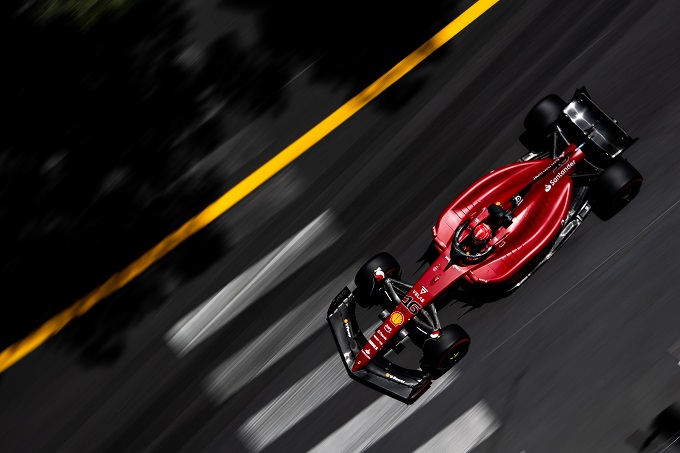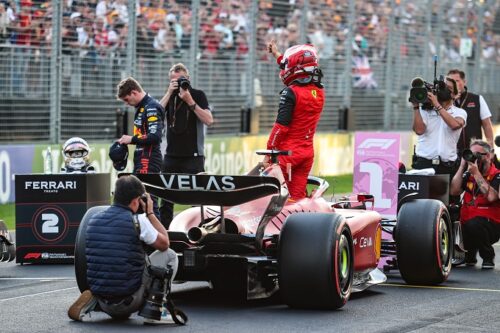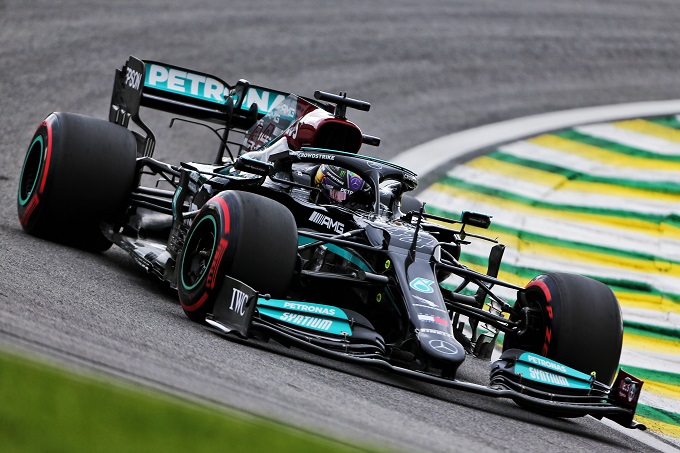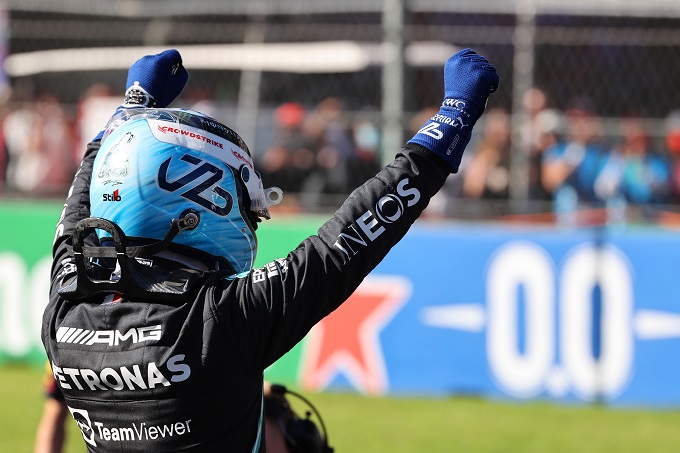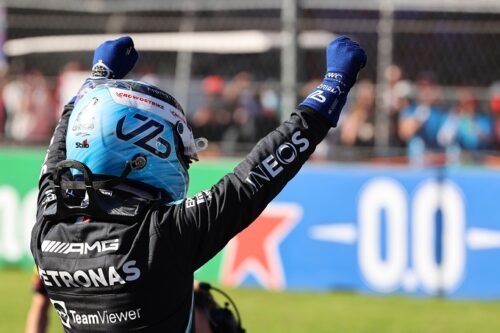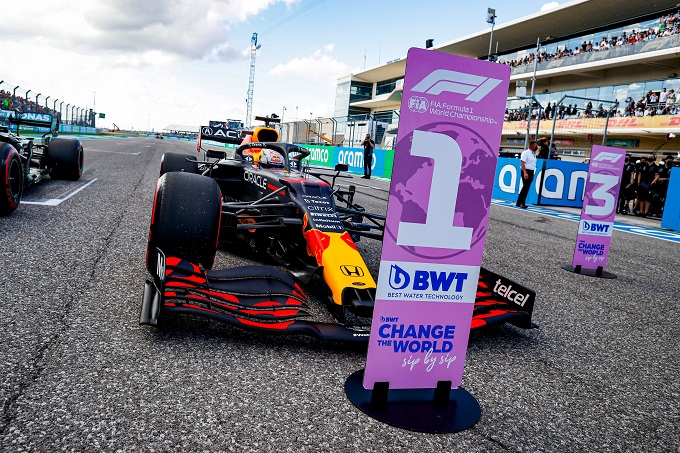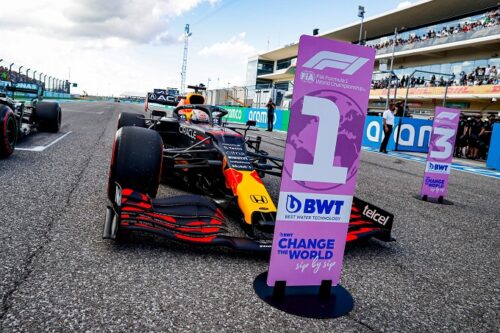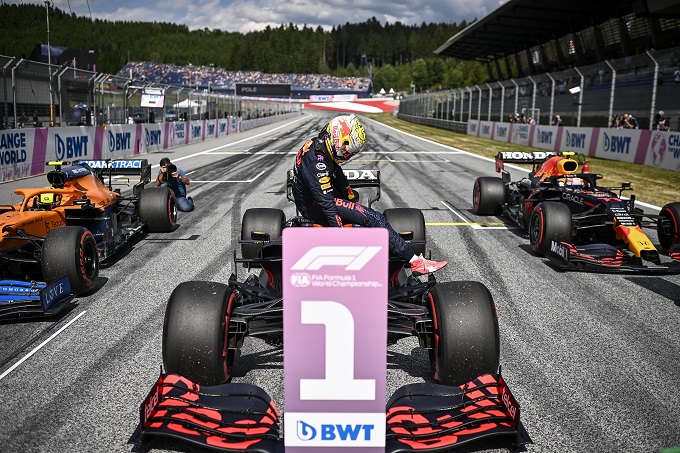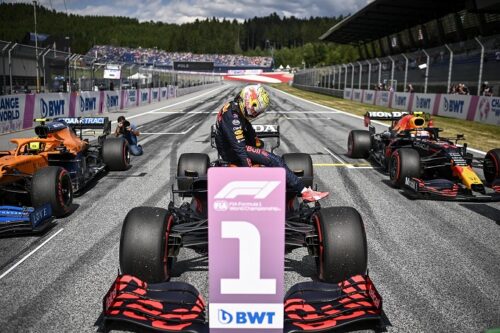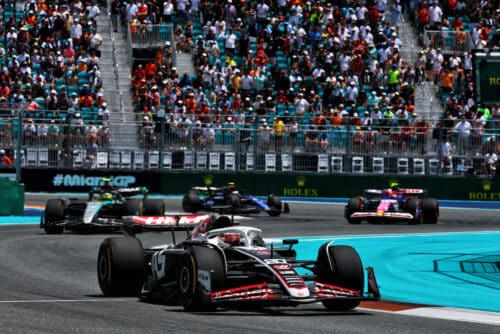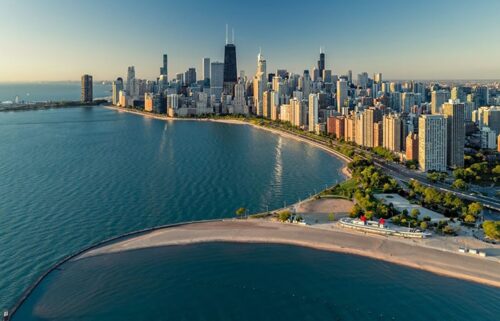F1 | Dutch GP: analysis of qualifying
Max Verstappen takes pole position in front of his home crowd. Fourth was an excellent Pierre Gasly, followed by the two Ferraris and Antonio Giovinazzi
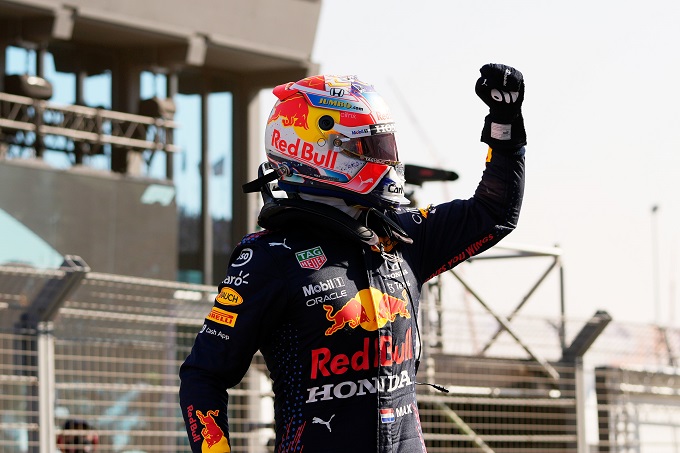
In the roar of the "Orange" tide present in the stands of Zandvoort, there could be no poleman other than Max Verstappen, who managed to impose himself in qualifying in front of the home crowd, taking first position ahead of the two Mercedes. A performance with which the Dutchman respected the odds, but not without some thrills, because a small flaw and a technical problem with the DRS on the main straight could have put a pole position at serious risk which, as shown on the track, the Hasselt driver had absolutely deserved it. During the last attempt, in fact, the vibrations due to a violent passage on the curb at the exit of turn three had led the Red Bull standard bearer to inadvertently press the gear shift paddle twice, thus losing the necessary momentum on the 'subsequent extension which had turned into precious cents lost compared to what he had managed to record in the first run. Even more significant, however, was the technical inconvenience to the mobile wing which had affected him in the final part of the session, which had forced him to cross the finish line with a speed approximately 13 km/h lower than what was recorded previously, with a loss in terms of lap time of more than a tenth of a second. Fortunately for the representative of the Milton Keynes team, the short length of the DRS area had made it possible to contain the damage and maintain a pole position built in particular with a perfect interpretation of the first sector, where Max had confirmed himself as the absolute protagonist as in the free tests.
“It's fantastic to be on pole position and of course it's even more satisfying when it's at one of your home races. Everyone went crazy every time I crossed the finish line and it's amazing to see people having fun in the stands. It's an old school track, smooth and fast like Suzuka, where you can really feel the grip of a Formula One car, it's challenging and I like tracks like this. Today we worked really well as a team and we made another good step forward with the car compared to yesterday” – commented Verstappen at the end of qualifying, describing his emotions for the seventh pole of the season -. ”Qualifying was quite difficult because of the red flags, you could see there was no room for error, which is nice and makes everything more exciting, but my lap was good. There were two occasions where I lost some time, first with a double upshift coming out of turn 3, where it's very bumpy, and then my DRS didn't open coming out of the last corner, which is a which we will have to check, but luckily the lap was enough for pole", then added the Dutchman, who tomorrow will have an important opportunity to achieve stage success and, possibly, also return to the top of the world championship standings.
A challenge which, however, will not be so simple, because behind them the Mercedes duo will be able to play with two strikers and attempt to put their rivals in check, unlike Red Bull, who will only see Verstappen fighting in the top positions due to of the early elimination of his teammate, Sergio Perez, at the end of Q1. Mercedes who in reality were close to completing what could have been a masterstroke, as Lewis Hamilton was able to stop just 38 thousandths from the time that had earned the Dutchman first position, drawing between the the time Max had recorded during the first attempt was different. Clearly, the misadventures that had struck the Red Bull driver at the end provided a distorted image of what the real gap between the two could have been, but this does not take away from the fact that the Briton was also the protagonist of a nice improvement, lowering his partials by a tenth and a half respectively in the second and third sectors: “I gave absolutely everything, but Max [Verstappen] did a fantastic job and deserved the pole position. I was trying to recover after missing most of yesterday's session, so that made the day a little more difficult. However, the car was good and this is a fun track to qualify on. It will be difficult, because it is a demanding track for overtaking, but strategy will play an important role. We have two cars in front, so we will both give our best", explained Lewis during the interviews, who had been able to do nothing to counter the domination of the tread in the first sector, the true "Achilles' heel" of the W12, despite seven in the last attempt times world champion had attempted a different approach from those used previously.
Behind him will start Valtteri Bottas, third on the starting grid, who could prove to be an important piece in the strategies of the Brackley team, especially on a track where it is difficult to overtake, which is why, if the opportunity arises , the team led by Toto Wolff could also diversify the strategy, covering all possible scenarios. Thanks to a second intermediate time that was not up to the standard of his team-mate, due in particular to the difficulties encountered on Friday also in the interpretation of turn seven, the Finn would hardly have been able to get close to Hamilton's times, but to have completely taken him out of the fight to the front row had been a mistake in the braking section of turn 11, where Valtteri had arrived slightly wide, thus losing the apex due to the rapid change of direction that characterizes the last chicane before the two fast corners: “It was a qualifying session fun. It's a track where it's fun to drive and there's also a nice atmosphere here. The car was good, but the Red Bull was a bit out of range today. We are still a bit lacking in the first sector, in particular in turns 2 and 3. My last lap in Q3 wasn't the best, I was gaining up to turn 11, but then I braked too late", declared Bottas, the which did not hide the problems of adapting the W12 to the high degree of banking which characterize the first intermediate time on the Zandvoort track, already highlighted on Friday.
Concluding the second row will be Pierre Gasly, who once again confirmed a special feeling with the AT02 on the flying lap, achieving a top six grid position for the tenth time this season. After a dark Friday, the Frenchman made the most of the changes made by his team during the night, opting for a more powerful aerodynamic configuration that allowed for greater support in the most demanding corners of the track. It is no coincidence that during Q3 Pierre was one of the very few drivers to have gone straight through turn seven, without ever lifting his foot from the accelerator, an aspect that had earned him the record time in the relevant mini-sector. A golden fourth position, which puts the Frenchman in a position to reconfirm himself in the race too, trying to contain the two Ferraris behind him, which certainly won't give him an easy life: "I'm extremely happy to have obtained P4 in qualifying today: it wasn't easy, because in practice we struggled a bit and we lacked a bit of pace. We managed to improve and put together a really good lap when it really mattered and it's nice to be able to start the race on the second row. Doing well in qualifying was important, because tomorrow it will be quite difficult to overtake: today we did a great job. The team has given me a great car and starting so far ahead, I will do everything I can to achieve a good result", explained the AlphaTauri driver, who was good at making the right changes during the night between Friday and Saturday. Immediately behind him will be Charles Leclerc, who did not hide a bit of disappointment for some small errors during his last attempt, which did not allow him to grab the second row: "It's a shame to have just missed fourth position today, but ultimately fifth and sixth place on the grid are a good result for us. We were probably a little too aggressive in choosing the front wing setting on the last attempt and so I lost the rear a bit in the central sector. For the race, tire degradation is something that is not yet completely clear to us, also because we were not able to carry out many simulations during free practice. We'll see in the race tomorrow how best to manage it. A good start will certainly be essential. since overtaking is very difficult here", explained the Monegasque, trying to underline how the choice to load the front wing at the end perhaps did not prove to be the best choice, unbalancing the car when going in and out, so much so that both in turn three and in turn ten Charles had been subjected to two checks following the loss of rear grip and, consequently, important hundredths of a second.
Only ten thousandths of a second divide the two Maranello cars, with Carlos Sainz paying for some small mistakes during his last attempt, in particular in turn nine, where in an attempt to delay the braking point as much as possible he had arrived slightly too long , missing the apex and experiencing a minimal amount of understeer. Elements that had undermined the good things the Spaniard had managed to build in the very first corners of the lap, precisely in correspondence with that area of the track where Carlos had crashed in the morning, forcing his mechanics to complete the repair work in less than two hours. A job well rewarded by a completely red third row, even if the team directed by Mattia Binotto cannot help but have some regrets considering that the time recorded by Charles Leclerc in the second heat would have easily earned him fourth position even at the end of Q3. The real surprise of the day, however, cannot fail to be the welcome return of Antonio Giovinazzi to the top ten, thanks to a seventh position resulting from the excellent work done by the Italian driver and Alfa Romeo to adapt the car to the characteristics of the Dutch track , which had already performed well on other circuits with characteristics not too distant from those that make Zandvoort so special. Undoubtedly, the numerous red flags that interrupted the progress of the first heats several times had represented a stroke of luck for the Italian, depriving his opponents of the opportunity to conclude their timed laps, but at the same time the driver from Martina Franca he had been able to build his own destiny, quickly setting a time that would have earned him access to the next heat. A fundamental aspect, especially bearing in mind that during Q2 a nut had stripped on the car number 99, forcing the mechanics to work hastily to try to remove the stuck tyre. In Q3, then, Giovinazzi managed to impose himself on the most direct competition, recording several record mini-sectors in the first sector, more precisely in the sprint out of turn three: a section in which he had to give way only to Verstappen, demonstrating of the quality of the work of the tricolor flag-bearer on Dutch Saturday: “Today's result is really good, and I would like to thank the team. We had a technical problem with a wheel nut between Q2 and Q3, but the team did an incredible job: they did everything they could and were able to get me back on track. Then I had to really push hard because I wanted to repay them for their work: the lap in Q3 was mega.
Concluding the top ten will be the two Alpines and Daniel Ricciardo's McLaren, again in Q3 after the good performance in qualifying at Spa. The French team paid above all for a central sector that was not up to the competition, especially in turns 7-8 , where the comparison with the most direct rivals sees them even more than 10 km/h slower. A bit of regret, however, for the Australian from the Woking team, who today had to settle for a tenth place, thanks to some grip deficiencies highlighted during the last heat: "In Q3 I felt as if I There was a lack of grip from the first corner, so it was a bit more of a struggle from then on. We still don't know why. The track may have changed and perhaps we missed something, but we will examine this and try to find an answer” – explained Ricciardo, whose time in Q2 would have been enough to place himself in front of the two A521s -. “It's frustrating because Q3 dictates the grid and this was our worst result in qualifying. There are some positives to take from today, but still some unknowns. We will continue to work on it", added the Australian, who at the end had not been able to be as effective as previously, highlighting slight understeer in several corners, an element with which the Perth driver had to live with and suffer for the whole season.
Opening the sixth row will be George Russell, unwillingly once again an interpreter for better or for worse. For the better because the Briton managed to gain a position of absolute importance, which tomorrow will guarantee him the opportunity to choose which tires to start with. At the same time, however, the Williams driver was the protagonist of a slight impact with the barriers exiting the penultimate corner, when there were around five minutes left before the checkered flag was shown: a real misfortune, because beyond due to the mistake, George was significantly lowering his times and this would most likely have earned him access to the final qualifying phase. Red flags whose impact was also felt after the restart of the heat, when in the final minutes Nicholas Latifi lost control of his car, touching the grass at the turn eight, causing a spin that accompanied him until an impact lateral against the barriers. These were the reasons that led to the second interruption, most likely the most important one, because it had effectively taken away the opportunity for any driver to improve, as happened to Lando Norris, who after a first run far from his standards of driving cleanliness , he was unable to replicate the good things he had shown during free practice. A bitter disappointment that did not allow us to finish better than fourteenth: “It's not the day I wanted or expected, I simply didn't do the best job. I didn't feel too confident in qualifying to put it all together. It's probably the closest qualifying we've had all year. It's a shame because this is the race where we really needed to be strong in qualifying, but we couldn't do it. We also didn't have the opportunity to have a last attempt due to the red flag", explained Lando, who as the weekend continued seemed to have lost his edge slightly in favor of his teammate, who was more direct and incisive in these particular circumstances. . A similar fate also befell Lance Stroll, who was also out of Q2, having his fastest lap interrupted while in the first half-time he had managed to remove more than two and a half tenths compared to his previous attempt: perhaps it would not have been enough to be able to overtake trap and access the next phase, but most likely he would still have managed to recover some positions on the starting grid.
If the McLaren driver has something to complain about, the same could also be said for Sergio Perez and Sebastian Vettel, both out at the end of the first qualifying heat. The Mexican had not even managed to start what should have been his last attempt, having crossed the finish line when the checkered flag had already been displayed. A situation resulting from slowdowns by the other teams in the pit lane on the outgoing lap, as well as a rather slow outlap, which did not allow him to complete that lap necessary to avoid an early and bitter disappointment at the end of the first heat . Things went even worse for the German from Aston Martin, who in the last few minutes had not managed to complete a really clean lap, only to then see the opportunity to access the next stage completely missed due to an impediment on the part of of the two Haas, stopped at the entrance to turn 13 waiting to begin their timed passage. An episode that immediately caught the attention of the commissioners, who however then decided not to sanction either of the two drivers of the American team as there were too many cars lined up on that stretch of track, as many as six, so that the maneuvering spaces would have been limited. Essentially, therefore, the stewards had argued that, although there had been an obvious impediment on the part of both Mick Schumacher and Nikita Mazepin, this could not be considered "unnecessary", thus avoiding triggering the penalty, despite in other similar cases had not been equally lenient.
Both Perez and Vettel could use the opportunity to fit two new Power Units on their car, given that both the Mexican and the four-time world champion lost one unit each respectively due to accidents during the Hungarian Grand Prix and of a mechanical failure during free practice in Zandvoort: “It's a disappointing result and there are lessons to be learned today. I think a place in Q2 was achievable with a clean lap and I felt good in the car, but there was a lot of traffic which prevented me from having the chance to complete a clean lap and maximize the evolution of the track. In any case, we were unable to make a big step forward from our encouraging pace during free practice, so we need to understand why this was the case. It's difficult to overtake here, but anything can happen tomorrow, especially on such a demanding track. We will try to make up ground in the race and take advantage of any opportunity", said the Aston Martin representative during interviews, underlining not only the difficulties encountered in completing a clean lap, but also those of the team in taking a step forward after a Friday that , although he had not seen the two English cars stand out on the time list due to the display of the red flag and some errors, it seemed encouraging.
The fight for pole position
Even in Zandvoort, the duel for pole position provided a spectacle despite some unforeseen events, leaving the two contenders for the title separated by just 38 thousandths. In the final part of the starting straight, Hamilton was immediately able to enjoy a small speed advantage, which however did not translate into such a significant relative lap time benefit, given the short distance between the start line and braking. curve 1 of approximately 250 metres. However, it was a good start, for what should have been the most complicated sector of all for the W12, which since free practice had shown that it could not digest the hairpin bends and banking of the first half-time. Difficulties that were also confirmed in qualifying starting from turn one, where Verstappen managed to be more incisive not so much when entering or going through, but when exiting, completely opening the throttle early and making full use of the wide curb at the exit which would have helped to contain any understeer phenomena. An exit advantage evident from the telemetry traces, which had allowed the Red Bull driver to reach the braking point of turn 2 with an overall speed approximately 4 km/h higher: a figure which on the face of it might seem almost irrelevant, but which takes on a totally different meaning when you think about the fact that Verstappen managed to create that difference in the space of just a few metres.
The situation was thus reversed, with the Dutchman virtually taking the lead with around a tenth of an advantage, ready to increase the gap in what had turned out to be one of the most favorable sections of the track for the RB16B, turn 3. A tangible difference in performance, which saw Max manage to reach the braking point with a speed 11 km/h higher, thanks to a more aggressive and prolonged use of the accelerator in the short space between the apex of turn two and the inclusion of the three, also demonstrating the goodness and reactivity of the RB16B on that stretch of track, which in the morning had managed to show equally convincing results even Sergio Perez, before he was badly eliminated in Q1. An advantage that Verstappen had also confirmed in the following long laps, thanks to a style that had proven to be extremely effective: delayed release of the accelerator pedal, apex point approximately halfway through the corner and a slight cut on exit to make the most of the exit , a true strength of Red Bull's talent throughout the weekend. What needed to be paid attention to, in fact, was not so much the minimum speed, in some cases comparable to that of other rivals on the grid, but rather the speed with which he was able to fully open the accelerator from the center of the corner and gain on exit.
A fundamental advantage, because whatever good he had done in those fractions of a second he would have brought it with him to the next sprint, which he would have to complete. Aware of the limitations of the W12, however, Hamilton had tried to do his best, even changing his interpretation between the first and second runs of Q3. If in the opening attempt he had kept tighter trying to completely cut the second part of the lap, in the final lap Lewis had opted for a less forced approach, using the brake in a different way and letting the car slide in the highest part of the banking, which allowed him to maintain a higher minimum speed of around 7 km/h. But, as illustrated previously, what really mattered was not the absolute data of the minimum travel speed, so much so that by comparing the two attempts, it is possible to notice that there were no particular differences at the telemetric level: in short, what Hamilton had gained in minimum speed had essentially compensated for the greater distance travelled. Turn three, however, also represented one of those two points where Verstappen could have put his pole position at serious risk. During the last run, in fact, Max had looked for that something more from his trajectory, widening at the exit to take full advantage of the large curb on the right: a passage perhaps too violent, the vibrations of which had involuntarily led the number 33 to press the paddle twice to change gear, thus going directly from fourth to sixth. A double gear change that had not allowed him to maintain the same momentum exiting the corner as the previous attempt, so much so that in the following sprint, although he had exited turn three more slowly, he had been able to realign himself to the speed of his rival . Clearly this had not proved sufficient to completely equalize the situation from a chronometric point of view, but managing to finish the first sector with a gap of less than two tenths could still represent a good opportunity to play one's chances for pole, especially keeping in mind mind you that in the first attempt that gap was much higher, around two and a half tenths.
The second sector opened immediately with turn seven, one of the most difficult on the track, where a good aerodynamic load is necessary as well as good stability of the car, a point where Mercedes in Friday's free practice did not seem to be completely at the level of the Red Bull. A situation that was reversed in qualifying, with the two contenders essentially equal in their mileage, lifting their foot from the accelerator only for a few fractions of a second, but without ever touching the brake. A similar argument could also be made for turn eight where telemetry doesn't tell the whole story. Hamilton and Verstappen, in fact, had favored different moments of that stretch of track, with the Englishman favoring the entry, keeping the throttle open halfway through the corner, while the Dutchman had focused on a more effective speed, trying to stay on the brakes for as long as possible to quickly get back on the accelerator while waiting for turn nine, only a few meters away.
Turn nine which probably represents the point where Lewis effectively lost pole position, due to a brief, but important, loss of the rear on entry, which forced him to correct and consequently move away from the inside curb, having to thus further accentuating the steering wheel angle instead of being able to let the car slide as done in the previous attempt. At the end of the second sector, only turn ten was missing, another sort of hairpin in which the RB16B could once again express all its qualities and impose its dominance exactly as had happened in other episodes during the lap. Also in this case, the two contenders for pole position had opted for different approaches, with Verstappen maintaining his characteristic style, completely leaving the accelerator and brake to make the car flow without excessively forcing the front and ending up in understeer , while Hamilton had opted for the opposite solution, leaving the throttle slightly open even during the acceleration phase. Two different approaches, but which had seen the Red Bull rider take immediate advantage, thus bringing the overall gap to the second lap time just under two and a half.
However, there was still another area missing, one in which Mercedes had proven to be among the most competitive teams of all throughout the weekend. Undoubtedly it would have been difficult to think of being able to completely close that gap, but it was a must to try. Hamilton had not held back and already at the braking point of number 11 he had managed to be slightly more effective in braking, unlike the Dutchman, who during this season has never made this element his strong point, rather preserving the precision of the front for the subsequent rapid change of direction. When going around Turn 12 the two were once again substantially equal, but what made the difference was the exit, where the seven-time world champion was able to maintain an excellent driving cleanliness despite having managed to open wide the throttle completely with some advance, while the Hasselt driver had to correct his trajectory several times, thus limiting the grip of the tyres. A small advantage that had been added to the one recorded in the bend, where also in this case Hamilton had managed to make the most of the qualities of the W12 and a certain amount of courage, briefly partialling only up to 25% of the pedal: a sufficient move to be able to further reduce the gap from the tread, which had thus dropped to a tenth and a half.
This clearly would not have been enough to take pole in normal conditions, but what no one expected could have changed the fate of the duel. In fact, on Verstappen's car, the mobile wing opening system was blocked, which did not allow the Dutchman to reduce his resistance to progress on the final sprint leading to the checkered flag. An important element, because if on other tracks the DRS may not be so relevant, on a track like Zandvoort where the teams had opted for high-load wings, the boost brought by the opening of the mobile wing could have been significant . Fortunately for the home idol, however, the short distance between the activation line and the finish line allowed the damage to be limited, despite the 13 km/h difference compared to the previous attempt.
The strategies
The Zandvoort track represents an unknown for the teams, who in view of the race must rely solely on the data obtained on Friday combined with that with which they had prepared for the weekend. What seems evident, however, is that the opportunities for overtaking on such a narrow and winding track are not many, which could almost certainly push the teams to limit the teams as much as possible to focus on the smallest number of stops possible, so so as not to get stuck in traffic. It is no coincidence, in fact, that Pirelli also suggests a strategy with a single pit stop, with the soft-hard strategy which according to the Italian manufacturer could prove to be the most effective one. The medium-hard one is almost similar, but it could provide greater freedom of action to lengthen the first stint, not so much to create an offset, but rather to analyze the situation and see if any race episodes could overturn the progress of the race.
if you want to always be updated on our news
Follow us here












